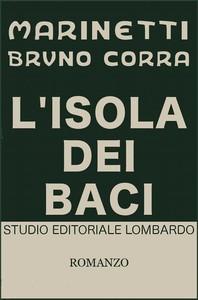Read this ebook for free! No credit card needed, absolutely nothing to pay.
Words: 61471 in 27 pages
This is an ebook sharing website. You can read the uploaded ebooks for free here. No credit cards needed, nothing to pay. If you want to own a digital copy of the ebook, or want to read offline with your favorite ebook-reader, then you can choose to buy and download the ebook.


: Heleija: Kertomus thüringiläisestä kansanelämästä by Ludwig Otto Peltonen Ester Translator - Thuringia (Germany) Fiction; German fiction Translations into Finnish
CONCLUSION.
TOPOGRAPHY OF BOSTON.
THE ORIGINAL PENINSULA.
There is a line of Cowper to the effect that "God made the country, and man made the town;" and there is probably no more striking evidence of the truthfulness of the axiom than is to be found in the history and growth of Boston, between the years 1630 and 1880, confirming in a remarkable manner Capt. Wood's prophecy concerning the town, in 1650: viz., "whose continuall inlargement presages some sumptuous city." The original territory which has formed the basis, so to speak, of Boston proper, was a peninsula, and appeared like two islands, or, by the continued operation of the sea, was likely to become so. Its distinguishing feature was to be found in its three prominent hills, or, perhaps, its two hills and its three-peaked mountain. These were her jewels: they have since represented her fame, her history, her sentiments; for these were all wrapped around them. The peninsula was a point of land projected into the harbor, with a narrow neck connecting it with the mainland, and another narrow place in the vicinity of what is now Dock Square, which was once quite open to the harbor. In length from the south line at Roxbury, it was something less than three miles . Its width at the widest point, between Wheelwright's wharf to Barton's Point, Leverett Street, was something over one mile, and its circumference about four miles.
CURIOUS EARLY DESCRIPTIONS.
The first impression of the "island" which has been recorded is that of Anne Pollard, who died in Boston, Dec. 6, 1725, at the age of 105 years, and left over one hundred descendants. She always said that she came over from Charlestown, in 1630, in the first boat that crossed with Gov. Winthrop's party, and, being what might now be called a romping girl for those times, ten years of age, was "the first to jump ashore;" and she afterwards described the place "as being at that time very uneven, abounding in small hollows and swamp, and covered with blueberry and other bushes." We do not think there is any one inclined to dispute this statement, or question its truthfulness.
There are several descriptions of early Boston, topographical and otherwise, which have been quoted by subsequent writers upon the subject, rather as curious and original than as having any particular merit in themselves. First among these is that of Capt. Edward Johnson, in his "Wonder-Working Providence of Sion's Saviour in New England," written about 1640. He describes it as surrounded by the brinish flood, "saving one small Istmos which gives free access to the neighbor townes," and says, "At their first landing the hideous thickets in this place were such that wolfes and beares nurst up their young from the eyes of all beholders.... The forme of this Towne is like a hearte, naturally situated for fortifications, having two hills on the frontice part thereof next the sea." These were Fort and Mill Hills. "Betwixt these two strong armes lies a large cove or bay, on which the chiefest part of the town is built, overtopped with a third hill" . There were two smaller hills on the Common, on one of which Gen. Gage afterwards built a battery, when the town was in his military possession, and on the other a powder-house.
Another curious description of Boston is given in Wood's "New England's Prospect:"--
"Boston is two miles North-east from Roxberry. His situation is very pleasant, being a Peninsula hemm'd in on the south side with the Bay of Roxberry, and on the north side with Charles River, the marshes on the back side being not half a quarter of a mile over; so that a little fencing will secure their cattle from the woolves. It being a Necke and bare of wood, they are not troubled with those great annoyances, wolves, rattlesnakes and musquetoes.... This Necke of Land is not above four miles in compasse, in forme almost square, having on the south side at one corner a great broad hill, whereon is planted a Fort, which can command any ship as shee sayles into any Harbour within the still Bay. On the north side is another Hill equall in bignesse, whereon stands a winde mill. To the north-west is a high Mountaine, with three little rising Hills on the top of it, wherfore it is called Tramount.... This town although it be neither the greatest, nor the richest, yet is the most noted and frequented, being the Center of the Plantations, where the monthly Courts are kept. Here likewise dwells the Governor. This place hath very good land, affording rich Corne-fields, and fruitful gardens, having likewise sweete and pleasant springs."
There were two large coves projecting into the peninsula,--one from the harbor and one from Charles River, nearly opposite to each other, and producing the narrow portion of the land already spoken of, so that if the peninsula was not formed of two islands originally, as has been supposed, the cutting of a creek across this narrow portion, nearly on the line of Blackstone Street, and uniting the waters of the two coves, had the effect practically to make it so, at least at such times as the waters of Charles River and the harbor met across the neck, near Roxbury; so that the peninsula can hardly be said to have been heart-shaped, much less square.
But the most curious description of Boston, though it may hardly be called such, is that given by Edward Ward--a low, but ingenious and scandalous author, whose book cannot enter a decent presence--in his "Trip to New England." He says of "Boston and the Inhabitants,"--
"On the south-west side of Massachusetts Bay is Boston, whose name is taken from the Town in Lincolnshire, and is the Metropolis of all New England. The houses, in some parts, join as in London. The buildings, like their women, being neat and handsome. And their streets, like the hearts of the male inhabitants, are paved with pebble.
Free books android app tbrJar TBR JAR Read Free books online gutenberg
More posts by @FreeBooks

: Ada the Betrayed; Or The Murder at the Old Smithy. A Romance of Passion by Rymer James Malcolm - English fiction 19th century


: The Wiving of Lance Cleaverage by MacGowan Alice Edwards Robert Illustrator - Man-woman relationships Fiction; Cumberland Mountains Fiction; Tennessee Fiction






